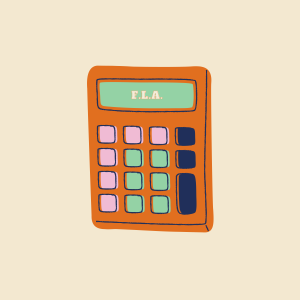Wire Size Calculator
Minimum Circuit Ampacity (MCA):
Recommended Wire Size:
| Size \ Temp. | 60 | 75 | 90 | 110 |
| 14 | 25 | 30 | 35 | 40 |
| 12 | 30 | 35 | 40 | 45 |
| 10 | 40 | 50 | 55 | 65 |
| 8 | 60 | 70 | 80 | 90 |
| 6 | 80 | 95 | 105 | 120 |
| 4 | 105 | 125 | 140 | 160 |
| 3 | 120 | 145 | 165 | 185 |
| 2 | 140 | 170 | 190 | 215 |
| 1 | 165 | 195 | 220 | 245 |
| 0 | 195 | 230 | 260 | 290 |
| 2/0 | 220 | 265 | 300 | 335 |
| 3/0 | 260 | 310 | 350 | 390 |
| 4/0 | 300 | 360 | 405 | 455 |
| 250 | 340 | 405 | 455 | 510 |
| 300 | 370 | 445 | 500 | 560 |
| 350 | 425 | 505 | 570 | 640 |
| 400 | 455 | 545 | 615 | 690 |
| 500 | 520 | 620 | 700 | 785 |
| 600 | 580 | 690 | 780 | 870 |
| 700 | 630 | 755 | 850 | 955 |
| 750 | 655 | 785 | 885 | 990 |
| 800 | 680 | 815 | 920 | 1030 |
| 900 | 730 | 870 | 980 | 1100 |
| 1000 | 785 | 935 | 1055 | 1180 |
| 1250 | 890 | 1065 | 1200 | 1345 |
| 1500 | 985 | 1175 | 1325 | 1485 |
| 1750 | 1070 | 1280 | 1445 | 1620 |
| 2000 | 1160 | 1385 | 1560 | 1750 |
| Size | 60 | 75 | 90 | 110 |
| 14 | 15 | 20 | 25 | 25 |
| 12 | 20 | 25 | 30 | 30 |
| 10 | 30 | 35 | 40 | 45 |
| 8 | 40 | 50 | 55 | 65 |
| 6 | 55 | 65 | 75 | 80 |
| 4 | 70 | 85 | 95 | 105 |
| 3 | 85 | 100 | 115 | 125 |
| 2 | 95 | 115 | 130 | 145 |
| 1 | 110 | 130 | 145 | 165 |
| 0 | 125 | 150 | 170 | 190 |
| 2/0 | 145 | 175 | 195 | 220 |
| 3/0 | 165 | 200 | 225 | 255 |
| 4/0 | 195 | 230 | 260 | 290 |
| 250 | 215 | 255 | 290 | 320 |
| 300 | 240 | 285 | 320 | 360 |
| 350 | 260 | 310 | 350 | 390 |
| 400 | 280 | 335 | 380 | 425 |
| 500 | 320 | 380 | 430 | 480 |
| 600 | 350 | 420 | 475 | 530 |
| 700 | 385 | 460 | 520 | 580 |
| 750 | 400 | 475 | 535 | 600 |
| 800 | 410 | 490 | 555 | 620 |
| 900 | 435 | 520 | 585 | 655 |
| 1000 | 455 | 545 | 615 | 690 |
| 1250 | 495 | 590 | 665 | 745 |
| 1500 | 525 | 625 | 705 | 790 |
| 1750 | 545 | 650 | 735 | 820 |
| 2000 | 555 | 665 | 750 | 840 |
| Size \ Temp. | 60 | 75 | 90 | 110 |
| 12 | 25 | 30 | 35 | 40 |
| 10 | 35 | 40 | 45 | 50 |
| 8 | 45 | 55 | 60 | 70 |
| 6 | 65 | 75 | 85 | 95 |
| 4 | 85 | 100 | 115 | 125 |
| 3 | 95 | 115 | 130 | 145 |
| 2 | 115 | 135 | 150 | 170 |
| 1 | 130 | 155 | 175 | 195 |
| 0 | 150 | 180 | 205 | 225 |
| 2/0 | 175 | 210 | 235 | 265 |
| 3/0 | 200 | 240 | 270 | 305 |
| 4/0 | 235 | 280 | 315 | 355 |
| 250 | 265 | 315 | 355 | 400 |
| 300 | 295 | 350 | 395 | 440 |
| 350 | 330 | 395 | 445 | 500 |
| 400 | 355 | 425 | 480 | 535 |
| 500 | 405 | 485 | 545 | 615 |
| 600 | 455 | 545 | 615 | 690 |
| 700 | 500 | 595 | 670 | 750 |
| 750 | 520 | 620 | 700 | 785 |
| 800 | 540 | 645 | 725 | 815 |
| 900 | 585 | 700 | 790 | 885 |
| 1000 | 630 | 750 | 845 | 950 |
| 1250 | 715 | 855 | 965 | 1080 |
| 1500 | 795 | 950 | 1070 | 1200 |
| 1750 | 880 | 1050 | 1185 | 1325 |
| 2000 | 965 | 1150 | 1295 | 1455 |
| Size | 60 | 75 | 90 | 110 |
| 12 | 15 | 20 | 25 | 25 |
| 10 | 25 | 30 | 35 | 40 |
| 8 | 35 | 40 | 45 | 50 |
| 6 | 40 | 50 | 55 | 65 |
| 4 | 55 | 65 | 75 | 80 |
| 3 | 65 | 75 | 85 | 95 |
| 2 | 75 | 90 | 100 | 115 |
| 1 | 85 | 100 | 115 | 125 |
| 0 | 100 | 120 | 135 | 150 |
| 0 | 115 | 135 | 150 | 170 |
| 0 | 130 | 155 | 175 | 195 |
| 0 | 150 | 180 | 205 | 225 |
| 250 | 170 | 205 | 230 | 260 |
| 300 | 195 | 230 | 260 | 290 |
| 350 | 210 | 250 | 280 | 315 |
| 400 | 225 | 270 | 305 | 340 |
| 500 | 260 | 310 | 350 | 390 |
| 600 | 285 | 340 | 385 | 430 |
| 700 | 315 | 375 | 425 | 475 |
| 750 | 320 | 385 | 435 | 485 |
| 800 | 330 | 395 | 445 | 500 |
| 900 | 355 | 425 | 480 | 535 |
| 1000 | 375 | 445 | 500 | 560 |
| 1250 | 405 | 485 | 545 | 615 |
| 1500 | 435 | 520 | 585 | 655 |
| 1750 | 455 | 545 | 615 | 690 |
| 2000 | 470 | 560 | 630 | 710 |
Ampacity Input (MCA)
The ampacity used to calculate the wire size is referred to the minimum circuit ampacity (MCA) after applying a voltage drop calculation to it. In the CEC and the NEC the MCA = 1.25 * FLA, where the FLA should be obtained from the nameplate or the manufacturer. If not, you can refer to Tables 44 and 45 of the CEC, or 430-148 and 430-150 of the NEC for these values.
In both the CEC and the NEC, the MCA of multiple motors is equal to the 1.25 * (FLA of largest motor) plus other motors.
MCA = 1.25(FLA of largest motor) + FLA of smaller motor 1 + FLA of smaller motor 2…
Parallel Runs
By running wires in parallel, the total ampacity of the circuit is increased. This allows for the transmission of higher currents without exceeding the ampacity limits of a single wire. Additionally they allow for flexibility in using different wire sizes based on specific needs. This can be advantageous when dealing with varying current requirements or when working with available wire sizes.
Circuit ampacity of 540A, and Copper conductors rated for 75°C:
Recommended wire size of 1000 MCM
in practice this wire size is large, expensive, hard to handle, and uncommon
Instead let’s use a parallel run, so we will divide the ampacity in two (2) by introducing a second parallel circuit:
New circuit ampacity for 2 runs: 540A/2 = 270A: Recommended wire size = 300 MCM
1 run of 1000 MCM or 2 runs of 300 MCM will carry 540A safely
** This can be done for multiple runs, if you want to run 3 parallel runs, then divide the ampacity by 3 instead **
Motor Conductor
It’s important to remember that rule 28-106 of the CEC states that the conductors of a branch circuit supplying a motor must be sized so that the ampacity of the conductors are not less than 125% of the motor’s FLA. If the FLA of a motor is 18A, then first you need to calculate the Minimum Circuit Ampacity (MCA), MCA = 125% * FLA = 1.25*18A, MCA = 23A. Using the MCA of 23A as the circuit ampacity, you’ll find that the recommended wire size (copper, 75°C) is 12AWG, instead of 14AWG is you had used the FLA value of 18A instead.
It’s important to choose the right wire size to ensure the safety and reliability of the system. To determine the required wire size, you’ll need to consider the amount of current that will be flowing through the wire, the distance the wire needs to run, and the type of insulation and environment the wire will be exposed to.
Choosing the wrong wire size can result in overheating, voltage drops, and even fires or electrical shocks. That’s why it’s crucial to take the time to calculate the proper wire size for your specific application.
Don’t make the mistake of assuming that bigger is always better when it comes to wire size. Choosing an oversized wire can lead to wasted resources and increased costs, while undersized wire can be a major safety hazard.
Use a wire size calculator or consult the Canadian Electrical Code to determine the right wire size for your job. Don’t cut corners or take shortcuts when it comes to electrical safety – choose the right wire size and install it properly to ensure the safety and reliability of your electrical system.
Using a wire size calculator can simplify the process of determining the required wire size. However, it is important to always verify the results with the CEC guidelines and consult a qualified electrical engineer or electrician for any installation or wiring questions.

